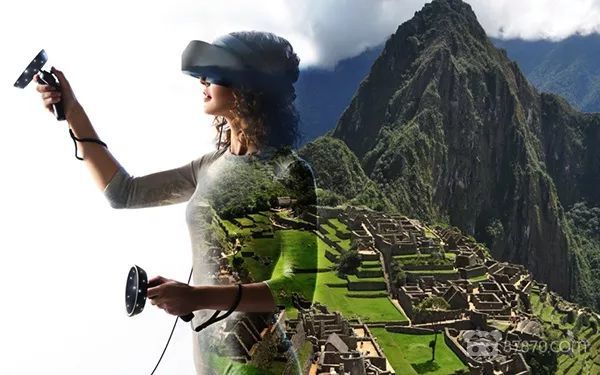Preface: for a set of VR equipment, the most core technology is motion capture and spatial positioning technology, after all, VR is an immersive interactive simulation system, like the VR box on the phone can only look like a good VR experience can not be talked about. An important reason for the huge price difference between different VR devices is the use of different spatial positioning technology, so its cost varies greatly, naturally reflected in the price.

The key words for spatial positioning reflected in VR devices are 3DoF and 6DoF parameters
The so-called 3DoF refers to the rotational movement of the head of the player wearing the VR headset, that is, up and down, left and right, front and back rotation movement. The low-end connected phones on the market Google Glass, Oculus Go, etc. all belong to the 3DoF type.

6DoF in 3DoF based on the increase of the body’s up and down, left and right, front and back movement. The current market mainstream PC high-end VR headset and some all-in-one machines and so on basically belong to 6DoF type.

I. Current VR headset positioning and tracking solutions are broadly divided into outside-in (from outside to inside) and inside-out (from inside to outside). outside-in relies on external cameras and transmitters to capture and track the user’s movements, and therefore has a high degree of accuracy and precision. HTC Vive uses Lighting, a positioning technology developed by Valve, which is recognized as one of the best outside-in positioning technologies. House positioning technology, which is recognized as one of the best outside-in positioning technologies. Lighting House positioning technology, which is recognized as one of the best outside-in positioning technologies, has obvious technical advantages, high accuracy, and low computational latency due to high data transmission, reducing some of the discomfort caused by latency.

Although the location tracking technology from outside to inside is more effective and simpler to implement, it also has some limitations, such as not being able to get the exact location of the user when the tracking object is far from the range of the sensor or when the object is obscured; the user cannot leave the effective monitoring area of the sensor at will, and the setup is also troublesome. Before playing the game, you need to turn on the power of the two sensors. And this limits its free range of motion…
Secondly, in order to break the limitations of outward-facing location tracking technology, developers began to study inward-facing location tracking technology, which has no cables and a higher degree of freedom. Unlike outward-inward, which requires external sensors to capture positioning, inward-outward tracking uses the device itself, rather than relying on other external sensors, to achieve spatial positioning in virtual scenes, and also has more human-machine interaction.

Compared with Outside-in, Inside-out is an inward tracking system, which is currently often used in VR as an optical tracking solution that relies on the computer’s visual algorithm to achieve tracking of the target. Applied to VR headsets, is by installing a camera on the helmet, so that the VR headset can detect changes in the external environment, with the help of a computer or algorithm chip to calculate the location of the VR headset in a certain space.
In short, Inside-out technology allows the headset does not need to rely on external sensor accessories, only by virtue of the device itself, you can achieve spatial positioning within the virtual scene, human-computer interaction and so on.
The first headset that truly uses Inside-out technology is the HoloLens that Microsoft showed at the 2015 developer conference. it does not need to set up additional auxiliary identification devices, but only needs to rely on the camera on the machine for real-time scene scanning, so that users can interact with objects in the virtual world through HoloLens.

The best headset using Inside-out technology HoloLens sales were dismal and share was not high, almost making people lose confidence in this technology. But this year, the storm has changed, HTC and Oculus both launched in the first quarter of the headset using Inside-out technology, which seems to imply that the big manufacturers are confident in Inside-out.
In fact, the trend of Inside-out is also well understood, because it has considerable advantages: 1.
1. no other hardware, peripherals
Because Inside-out installs the camera and sensors directly on top of the head-up display, it can read the depth information directly through the head-up display, thus converting it into spatial position data of the target, so it can be used without the assistance of other hardware.
2. High degree of freedom
In the previous article, we mentioned that Outside-in has restrictions on the range of movement, and the user must move within the trackable range of the base station in order to have a normal experience.
Inside-out, on the other hand, allows users to get rid of the range restriction and move in any space.
3. Convenience and Speed
In addition to the need to install the cable, each time you replace the computer, plug and play the cable, HTC Vive requires ten minutes to build the base station, to play games with Steam also has to run the room settings.
The headset equipped with inside-out technology can eliminate the need for additional installation, especially in the outdoor experience, without having to repeat the build.
Third, there is also a hotter spatial positioning technology NOLO in China now, which also belongs to outside-in (from the outside to the inside). The kit consists of a positioning base station, two handles and a helmet locator.

It can adapt to the mainstream mobile VR, PC VR, all-in-one and AR headsets currently on the market, providing spatial positioning and interaction support.

The advantage is that it is low cost and can enable low-end 3DOF VR devices to achieve 6DOF positioning effect. However, it also has outside-in disadvantages, compared with Lighting House positioning technology in terms of accuracy and response time is far from.

